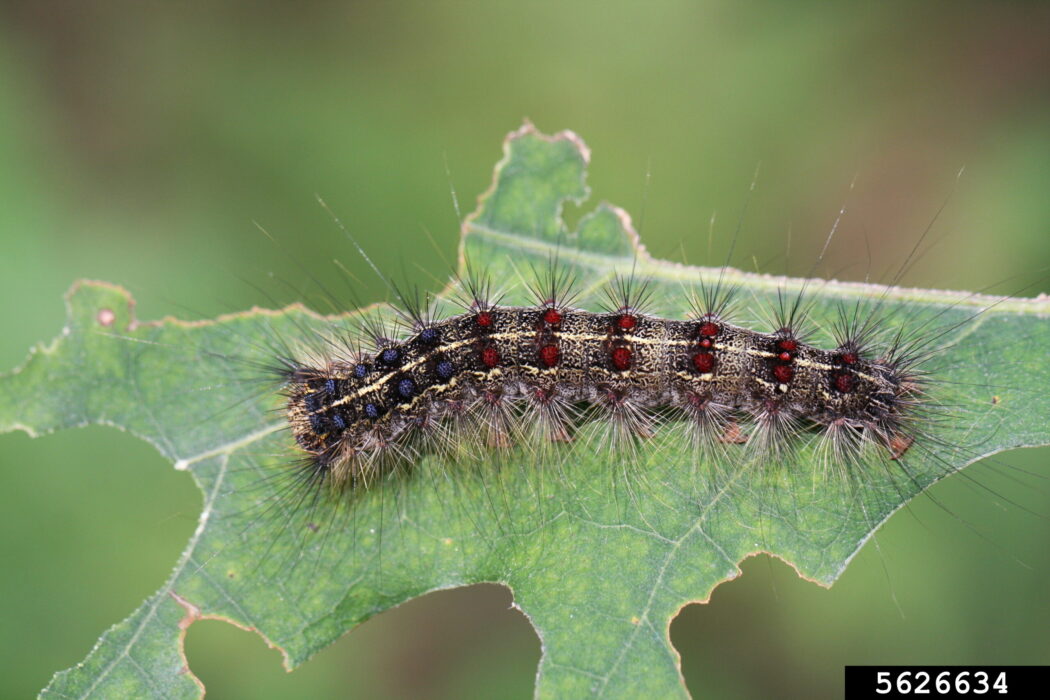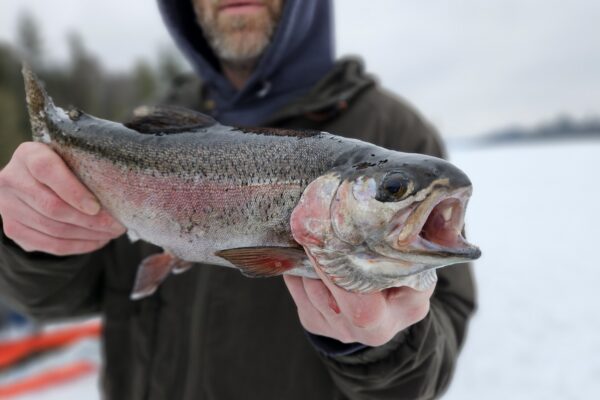Federal funding delays disrupt state management efforts for invasive spongy moths
Each year the Minnesota Department of Agriculture (MDA) participates in the Slow the Spread program, a national effort to suppress the invasive spongy moth population and slow their movement across the United States. The program includes a three-prong approach to management. It includes applying a bacteria-based pesticide that specifically targets spongy moth caterpillars, using pheromones to confuse adult moths and prevent breeding, and collecting data based on trapping moths.
Due to delays in the federal funding that supports the program, this year the MDA has had to scale back on their efforts. They will not be applying Btk, the bacteria that targets spongy moth caterpillars.
MDA Plant Protection Division Director Mark Abrahamson told WTIP that spongy moths pose the most serious risk as defoliators. The caterpillars strip trees of their leaves. The stress of the leaf loss and the energy it takes for a tree to replace them can cause permanent damage and make the trees more susceptible to other pests or disease.
According to Abrahamson, the delay seems to be part of the general trend at the federal level of funding, even for established programs, being disbursed late pending reviews. He said, “The problem is that the federal funding that typically funds the majority of this program has been very slow to be released. So we are optimistic that there will still be funding that is made available to this program, but it hasn’t been yet. And so what is affected this year are the Btk treatments.”
Abrahamson said because Btk is applied arially using planes, it takes a high level of coordination. The funding delays mean that MDA has simply run out of time. He added that at this time MDA still hopes to receive funding in time for the survey work and mating disruption that make up the rest of the program.
“The next thing that we’re then looking towards is the trapping survey, which is really important because the data that are generated from that survey are what drives the whole program. Without the data, we have no idea where to do management next year, Abrahamson said. “So now we’re hopeful that the funds will be released in time that we can get the trapping going, which starts in about June.”
While Abrahamson said he was hopeful that the remaining parts of the program could still be funded, he acknowledged that missing out on the Btk spraying this year is a setback for population management. Btk application generally targets what he described as start-up populations, which push the edges of the main population into new areas.
The missed year will mean more caterpillars in those areas reaching adulthood and reproducing, which might set the MDA up for a more difficult time managing the population in 2026. Abrahamson said, “We’re hopeful that we kind of get through this year of transition, and then by next year, the programs operating as normal, and we can go back to those sites and still do that same kind of a treatment again to stamp them out, but realizing they’ll probably be bigger a year from now than they would be now.”
Slow the Spread is an example of the many programs, especially interstate efforts, that are implemented by states but funded by the federal government. “Federal funding has been a very important source of funds for invasive species work for Minnesota,” said Abrahamson. “It does really highlight how important the federal funding has been to do this work. And if it weren’t available, it would be difficult, you know, to do that same work at the state level without it.”
Abrahamson said the program has many years of success, and he hopes that this delay will not impact the MDA’s efforts long-term.
WTIP’s Kirsten Wisniewski spoke with MDA Plant Protection Division Director Mark Abrahamson. Audio of that interview is below.














